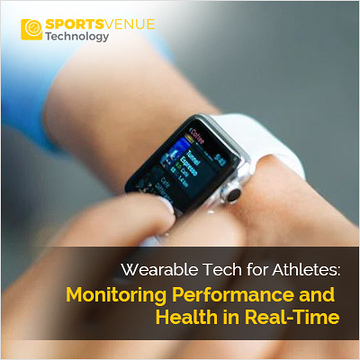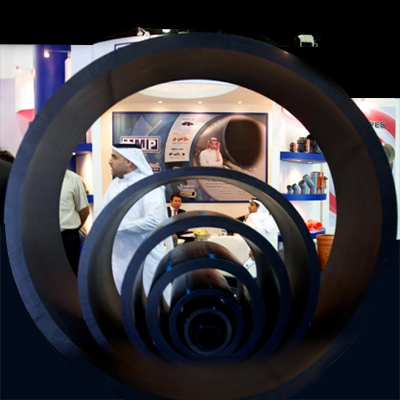Wearable Tech for Athletes: Monitoring Performance and Health in Real-Time

Introduction:
The integration of wearable technology in the world of sports has ushered in a new era of performance monitoring and health management for athletes. These cutting-edge devices offer real-time insights into various physiological parameters, allowing athletes, coaches, and sports professionals to make informed decisions for optimizing performance and ensuring the well-being of athletes. This article explores the diverse applications of wearable tech in sports, shedding light on how these devices are transforming the landscape of athletic training and competition.
Performance Tracking:
Performance tracking through wearable technology has become a cornerstone in optimizing athletic training and competition. Smartwatches, fitness trackers, and specialized sports sensors have emerged as invaluable tools, providing a wealth of real-time data to athletes, coaches, and sports professionals.
These wearables capture a spectrum of key performance metrics, offering insights into an athlete's physiological responses during various activities. Heart rate monitoring, for instance, allows for a nuanced understanding of cardiovascular exertion, helping tailor training regimes to individual fitness levels. Distance covered, speed and acceleration metrics offer granular details about an athlete's movements, aiding in performance analysis and improvement.
One of the pivotal elements enhancing performance tracking is the integration of GPS technology. Wearables equipped with GPS capabilities provide accurate location-based data, delivering a spatial context to an athlete's activities. This data proves invaluable for tactical analysis and strategic planning, allowing coaches to dissect an athlete's performance on a granular level. By understanding movement patterns and positioning during training or competition, coaches can refine strategies, optimize game plans, and make data-driven decisions in real-time.
In team sports, the strategic deployment of athletes on the field or court can be finely tuned using GPS data. Coaches can identify optimal positioning, analyze player interactions, and devise game strategies based on spatial insights. This not only enhances overall team performance but also contributes to injury prevention by identifying areas of excessive physical stress or potential collisions.
Overall, wearable technology's role in performance tracking goes beyond mere data collection. It empowers athletes and coaches to make informed decisions, tailor training programs, and refine strategies, ultimately pushing the boundaries of athletic achievement. As these technologies continue to advance, the depth and accuracy of performance tracking are poised to further revolutionize the world of sports.
Health Monitoring:
Beyond tracking performance metrics, wearables play a crucial role in monitoring vital signs and overall health, ushering in a new era of comprehensive athlete well-being. These advanced devices go beyond the traditional realms of fitness tracking to provide real-time insights into an athlete's physiological condition, contributing significantly to injury prevention, fatigue management, and the optimization of recovery strategies.
Wearables equipped with biometric sensors delve into key health indicators, including heart rate variability, sleep patterns, and oxygen saturation levels. By continuously monitoring these vital signs, athletes and their support teams gain a holistic understanding of an individual's health, allowing for proactive measures to be taken.
The utilization of real-time health data plays a crucial role in injury prevention strategies. Wearables can identify anomalies or indications of overexertion, empowering both athletes and coaches to make informed decisions regarding training loads and intensity. This proactive approach facilitates the early identification of potential injury risks, enabling timely adjustments to training regimens and thereby reducing the likelihood of long-term health issues.
Wearables excel in the realm of health monitoring, particularly in managing fatigue. Through the analysis of sleep patterns, recovery rates, and stress levels, these devices offer valuable insights into an athlete's preparedness for training or competition. This data assists in fine-tuning rest periods, ensuring that athletes are both physically and mentally prepared for peak performance when it is most crucial.
Furthermore, wearables contribute significantly to the fine-tuning of recovery strategies. Real-time health data allows for the customization of recovery plans based on individual needs. Whether it's adjusting nutrition, implementing specific rehabilitation exercises, or modifying training schedules, wearables empower athletes and their support teams to tailor recovery strategies for optimal results.
In essence, the integration of health monitoring capabilities in wearables transcends the conventional boundaries of sports technology. It not only enhances performance but also safeguards athlete well-being, creating a holistic approach to training and competition that considers both the physical and mental aspects of an athlete's health. As wearables continue to evolve, their impact on promoting overall athlete wellness is set to become even more pronounced.
Biometric Data Analysis:
The analysis of biometric data in sports has evolved into a sophisticated field, propelled by advanced algorithms that delve deep into an athlete's physiological responses during training and competition. Biometric data, encompassing parameters such as heart rate, oxygen levels, and other vital signs, is subjected to intricate algorithms designed to extract meaningful insights.
In real-time, these algorithms analyze extensive datasets, discerning patterns, trends, and anomalies within an athlete's physiological responses. For instance, the analysis of heart rate variability can provide valuable insights into an athlete's stress levels, recovery capacity, and overall readiness for physical exertion. Similarly, monitoring oxygen saturation levels becomes instrumental in gauging the efficiency of oxygen utilization, a critical factor in assessing endurance and overall performance capabilities.
Leveraging this abundance of information, teams customize training regimens at both individual and collective levels. Coaches, utilizing real-time biometric feedback, tailor workouts to optimize training loads, intensity, and recovery periods for each athlete. For example, an athlete showing signs of fatigue or heightened stress may see their training adjusted to prevent overexertion and minimize the risk of injury. On the other hand, athletes in peak condition may be encouraged to push their training boundaries to maximize their potential.
Harnessing this wealth of data, teams individualize and refine training regimens at both the personal and group levels. Coaches, drawing insights from real-time biometric feedback, craft workouts that fine-tune training loads, intensity, and recovery intervals for each athlete. For instance, if an athlete exhibits signs of fatigue or increased stress, their training may be adapted to prevent overexertion and mitigate the risk of injury. Conversely, athletes in peak conditions might be motivated to extend their training boundaries to optimize their potential.
Examples abound in various sports, from soccer teams using heart rate data to manage players' workloads during matches, to endurance athletes optimizing their training routines based on oxygen saturation trends. As technology advances, these algorithms continue to refine their accuracy, providing sports professionals with increasingly nuanced insights into the intricate relationship between an athlete's biometrics and performance. The result is a paradigm shift in training methodologies, where precision and personalization based on biometric data analysis become integral components of achieving peak athletic performance.
Injury Prevention:
Wearables have emerged as pivotal tools in the realm of injury prevention by monitoring biomechanics and identifying movement patterns that could potentially lead to injuries. These advanced devices, equipped with sensors and accelerometers, provide invaluable insights into an athlete's body mechanics during training and competition.
By continuously analyzing biomechanical data, wearables can detect irregularities or deviations from optimal movement patterns. For instance, they may identify asymmetries in gait, improper landing techniques, or excessive strain on specific joints. This proactive monitoring enables athletes and their support teams to address potential risk factors before they escalate into serious injuries.
Numerous case studies highlight the significant role of wearable technology in reducing the risk of injuries among athletes. In professional soccer, for example, wearables have been instrumental in tracking players' movements and biomechanics, helping coaches identify patterns that may increase the likelihood of muscle strains or ligament injuries. By intervening with targeted interventions, such as personalized strength and conditioning programs or corrective exercises, teams can mitigate injury risks and enhance overall player durability.
In track and field, wearables have been employed to analyze running mechanics and biomechanics during sprinting or long-distance events. By monitoring factors like stride length, cadence, and ground contact time, coaches can identify potential issues that may predispose athletes to overuse injuries. This proactive approach allows for the modification of training techniques and the implementation of corrective measures, ultimately reducing the incidence of injuries.
In the realm of contact sports like American football, wearables have proven effective in assessing the impact forces experienced by players during tackles or collisions. This data helps teams manage players' workloads and implement targeted recovery strategies to reduce the risk of repetitive stress injuries and concussions.
Utilizing this abundance of data, teams personalize and optimize training routines at both individual and collective levels. Coaches, utilizing insights from real-time biometric feedback, design workouts that precisely adjust training loads, intensity, and recovery periods for each athlete. For example, if an athlete shows indications of fatigue or heightened stress, adjustments may be made to their training to avoid overexertion and reduce the risk of injury. Conversely, athletes in peak condition might be encouraged to push their training limits to maximize their potential.
Real-Time Feedback and Coaching:
The landscape of athlete training and performance is undergoing a revolution through wearable technology, offering instantaneous feedback. This empowers athletes to make real-time adjustments for enhanced performance. Immediate insights into metrics such as heart rate, speed, and biomechanics enable athletes to optimize techniques and strategies on the spot.
Be it a runner modifying their pace, a weightlifter perfecting their form, or a tennis player adjusting their footwork, wearables provide athletes with a constant flow of data during both training and competition. This immediate feedback empowers them to make informed decisions about their performance, resulting in more efficient and effective training sessions.
Equally significant is the role of coaches in utilizing this real-time data to provide targeted feedback. Coaches can monitor multiple athletes simultaneously, gaining insights into their individual and collective performances. By analyzing this wealth of information, coaches can identify areas for improvement, correct technical flaws, and guide athletes toward optimal strategies.
For instance, in team sports, coaches can use wearables to track the positioning and movement patterns of players on the field. This information allows them to provide strategic guidance, make tactical adjustments, and even communicate with athletes during live competitions. In individual sports, such as golf or cycling, wearables help coaches analyze biomechanics and provide instant feedback on elements like swing mechanics or pedal cadence.
The synergy between athletes and coaches, facilitated by real-time feedback through wearables, creates a dynamic training environment that fosters continuous improvement. Athletes receive timely guidance, allowing them to refine their skills and make incremental progress. Coaches, armed with detailed performance insights, can tailor their coaching strategies to address specific weaknesses and nurture the development of well-rounded athletes.
As wearables continue to advance, the depth and immediacy of real-time feedback and coaching are set to play an increasingly integral role in the pursuit of athletic excellence. This symbiotic relationship between technology, athletes, and coaches exemplifies a new era in sports training methodologies, where precision and adaptability converge to elevate performance to unprecedented levels.
Challenges and Future Developments:
Despite the revolutionary impact of wearable technology on sports, challenges persist. A significant concern revolves around data privacy. Athletes generate extensive personal and performance-related data using wearables, prompting inquiries into the storage, sharing, and protection of this information. Balancing the advantages of wearables with the imperative to safeguard athletes' privacy constitutes a critical challenge for the sports technology industry.
Another challenge lies in the lack of standardization across wearable devices and platforms. The diversity of sensors, data formats, and communication protocols makes it difficult for different devices to seamlessly integrate and share information. Standardization efforts are essential to ensure interoperability, enabling athletes and coaches to utilize a variety of wearables without facing compatibility issues.
Looking to the future, ongoing research and development are exploring ways to overcome these challenges and unlock new potentials. The integration of artificial intelligence (AI) and machine learning (ML) is a promising avenue. These technologies can enhance data analysis capabilities, providing more meaningful insights from the vast datasets generated by wearables. AI and ML algorithms can identify subtle patterns, predict potential issues, and offer personalized recommendations for training, recovery, and injury prevention.
Furthermore, researchers are exploring the potential of wearables in advancing sports science and performance optimization. This includes the development of more sophisticated sensors for monitoring additional physiological parameters, refining biomechanical analysis, and expanding the range of performance metrics tracked. Additionally, the incorporation of virtual reality (VR) and augmented reality (AR) technologies into wearables may offer immersive training experiences, enabling athletes to simulate scenarios and enhance skill development.
As wearable technology advances, it is essential to prioritize addressing privacy concerns and setting industry-wide standards. Concurrently, continuous progress in AI, ML, and the integration of emerging technologies is positioned to bring about a new era of precision in sports analytics. This ongoing transformation holds the potential to reshape the landscape of athletic training and optimize performance, presenting athletes and coaches with unprecedented tools and insights.
Conclusion:
Wearable technology stands as an indispensable tool in the sports arena, furnishing athletes and teams with a rich stream of data to propel them to new heights. The ongoing evolution of this technology points towards an exciting future for the sports industry, where real-time performance monitoring and health management seamlessly intersect.




